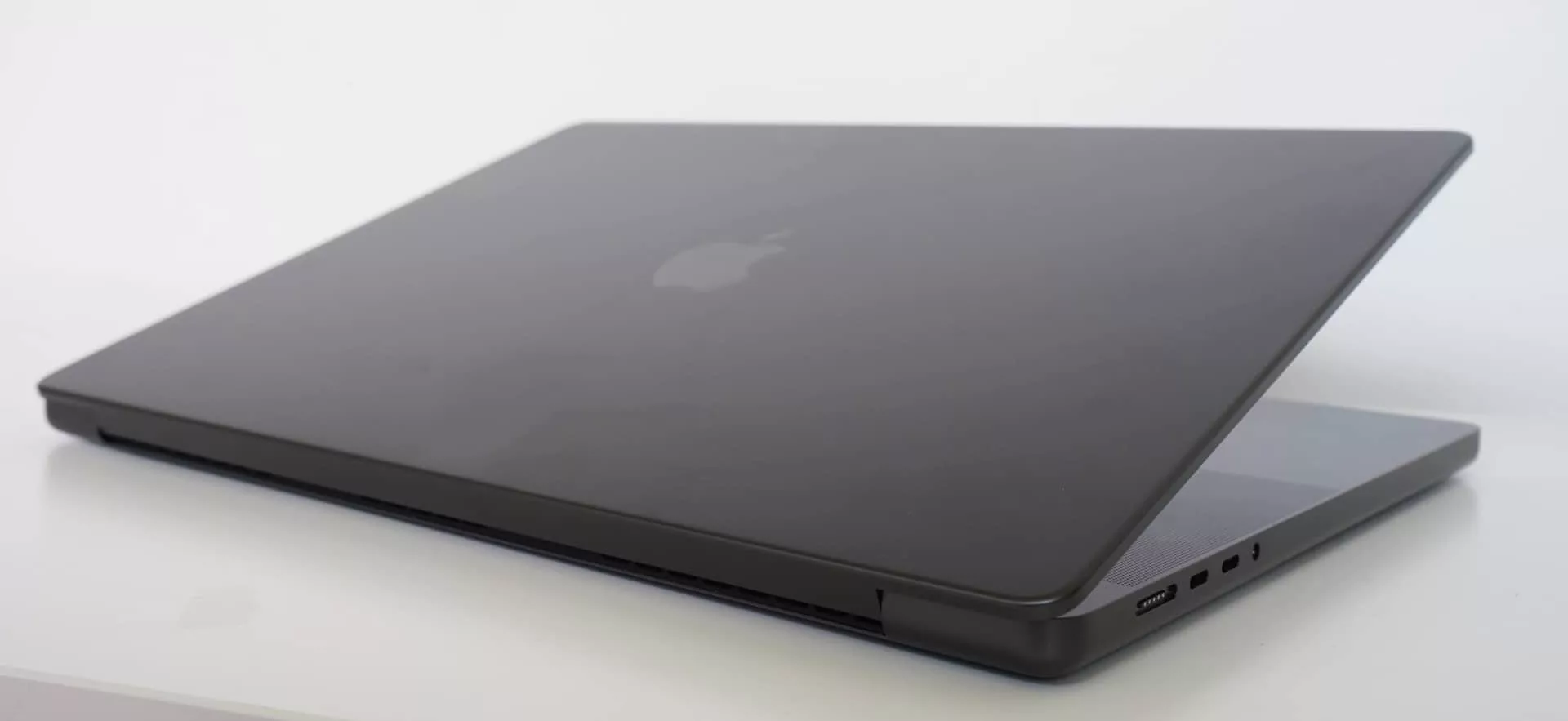Quick review
The good
The not-so-good
Power to go isn’t the same for every portable, but the latest Mac delivers in spades. The M3 Max MacBook Pro 16 is a beast in all the best ways.
Expecting new computers every year is more or less just how life goes, but expecting a new generation of Mac chip? That one took us by surprise.
After all, we’ve already seen one earlier in the year, with Apple launching new portable Pro Macs to start the year. Back then, the M2 Pro and M2 Max were the chips to consider, boasting considerable speed and performance for the folks who needed them.
There’s a clear distinction between the standard chips and the Pro and Max models now, while the Apple Silicon “Ultra” models are built for the desktops that need even more grunt, and the folks they’re built for know exactly who they are.
So we expected new chips in 2024. We’d already had our new Mac chips for the year.
It turns out Apple had other ideas, launching the M3 line of chips to finish 2023.
While the news isn’t great if you bought an M2 MacBook Pro thinking it would be the fastest in all the land for a little while to come, it does mean there’s some new hardware out to impress if you find you’re squeezing your Mac for all its worth.
And while we’re not sure who that could possibly be — because yikes, these things are already fast! — the M3 MacBook Pro may well deliver the best laptop performance we’ve ever seen. Ever ever. Ever ever ever ever. It’s that impressive.
Design
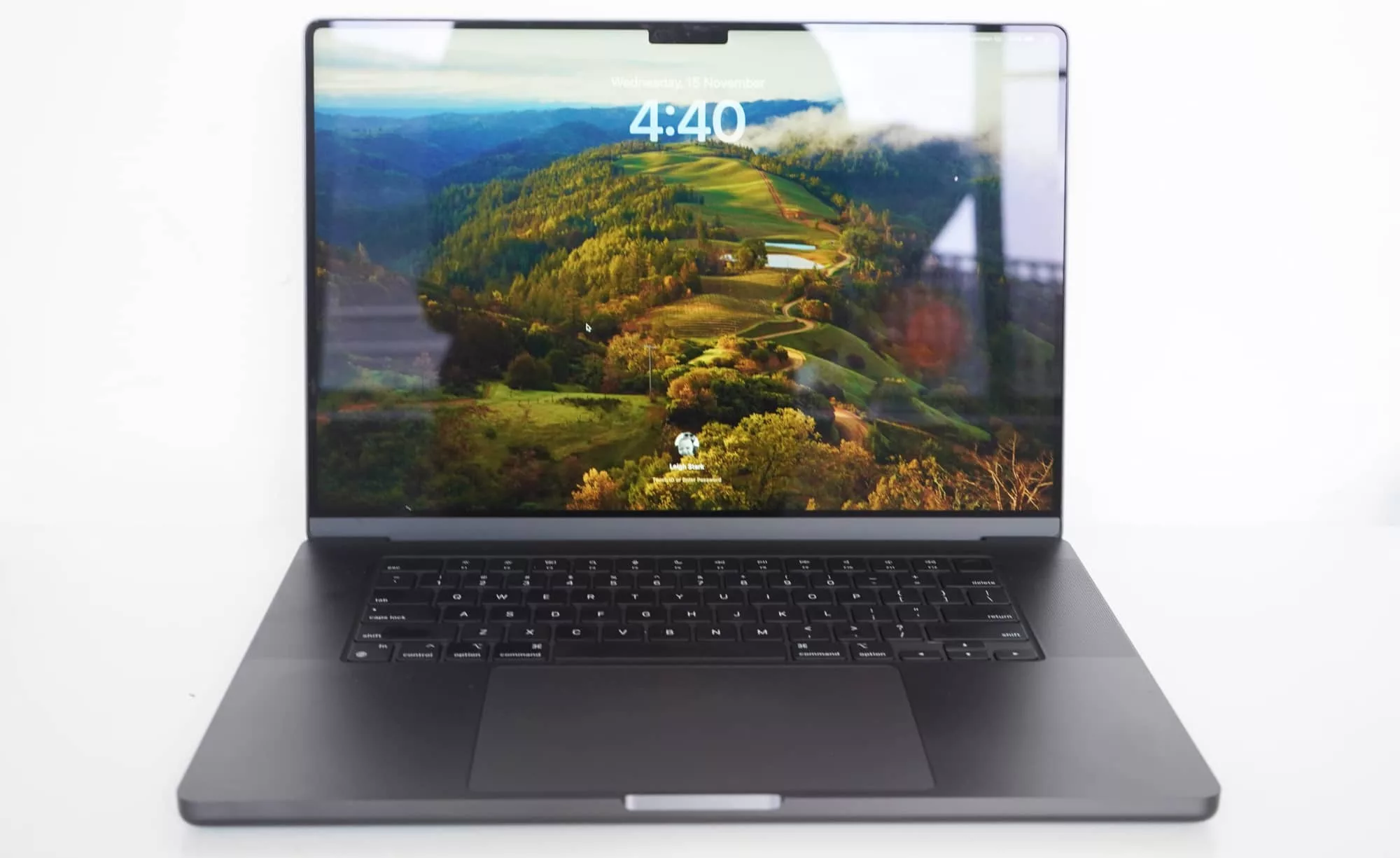
Another generation of the MacBook Pro won’t see any changes to the design, possibly because Apple has already managed to get so much right.
A softened thin aluminium machine measuring 1.68cm closed and weighing 2.16kg, there’s not a lot of new to the 2023 MacBook Pro except beyond the sleek Space Black colour, which is like a really, really dark metallic grey and looks very swanky, though only available on models with either the M3 Pro or M3 Max.
Not that Apple needed to change anything; we’ve loved the look of the MacBook Pro to date, and you probably will, too.

Features
It’s a similar story with ports on the MBP, as they largely stay the same as well.
You’ll find the MagSafe 3 power charging block on the left side alongside two Thunderbolt 4 ports you can charge from that also work with USB 4 via USB-C, and a 3.5mm headset jack. Meanwhile, the right side provides an SDXC card slot, another Thunderbolt 4/USB-C port, and a long HDMI port that can drive up to four external displays at once, or three running 6K at 60Hz, or even one single display at 4K 144Hz.
Wireless features are much the same, supporting 802.11a/b/g/n/ac/ax WiFi 6E alongside Bluetooth 5.3, while the multimedia features are much the same. As such, you’ll find a 1080p FaceTime HD camera up top, a three-mic array in the body, and a six-speaker system that supports spatial audio, handy since Apple Music plays spatial audio, too.
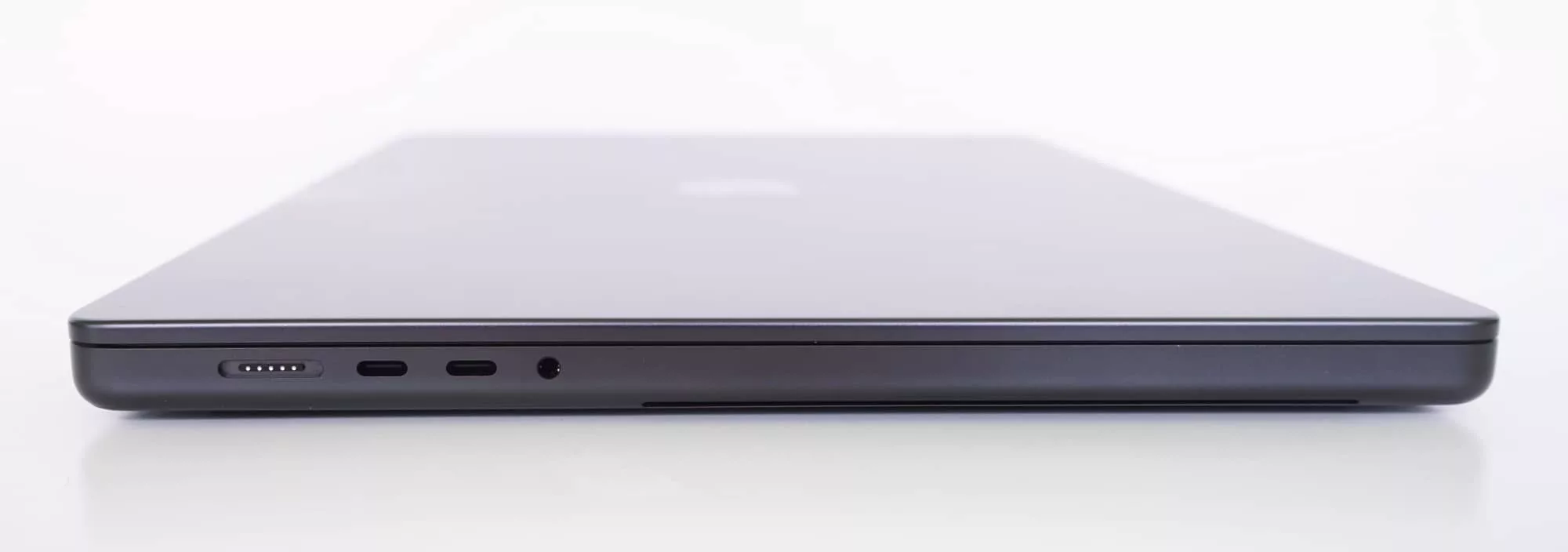
The biggest change in the biggest Mac is actually the move to the M3, Apple’s latest high-end chip, which in the model we’re reviewing is actually an M3 Max, the biggest of the bunch. Three variations are available in the M3 lineup, but in the 16 inch MacBook Pro for this review, only two: the M3 Pro and M3 Max.
You’ll find up to 16 CPU cores for processing in the M3 Max and up to 40 cores of GPU power for graphics, while the chip itself also supports more RAM, able to hit a staggering 128GB in a laptop. Storage can also be pushed, supporting as little as 512GB SSD and as much as 8TB SSD, depending on how deep a wallet you have.
The 16 inch M3 MacBook Pro being reviewed here is spec’d with 16 cores CPU, 40 cores GPU, 48GB RAM, and 1TB SSD in Space Black.

| Model | Apple MacBook Pro 16 (Mac15,9) |
| Chip | Apple M3 Max @ 4.05GHz |
| RAM/Storage | 48GB RAM / 1TB SSD |
| OS | macOS 14.1.1 |
| Connections | WiFi 6E, Bluetooth 5.3, 3x Thunderbolt 4/USB 4, HDMI, SDXC, 3.5mm |
| Size/Weight | 1.68cm, 2.16kg |
| Price | Starting from $5999 AUD |
Display
Armed with yet another of Apple’s Liquid Retina XDR displays, the 16.2 inch screen of the 16 inch MacBook Pro is a sleek looking screen you won’t want to take your eyes off. Running a resolution of 3456×2234, it’s not quite 4K but it also doesn’t have to be, getting a solid 254 pixels per inch, which is plenty fine for how close you’ll typically be to your laptop screen.
Like other current MacBook variations, there’s a shelf cut out for the camera, giving you more of the screen in the frame, which helps to give you that little bit more to look at.
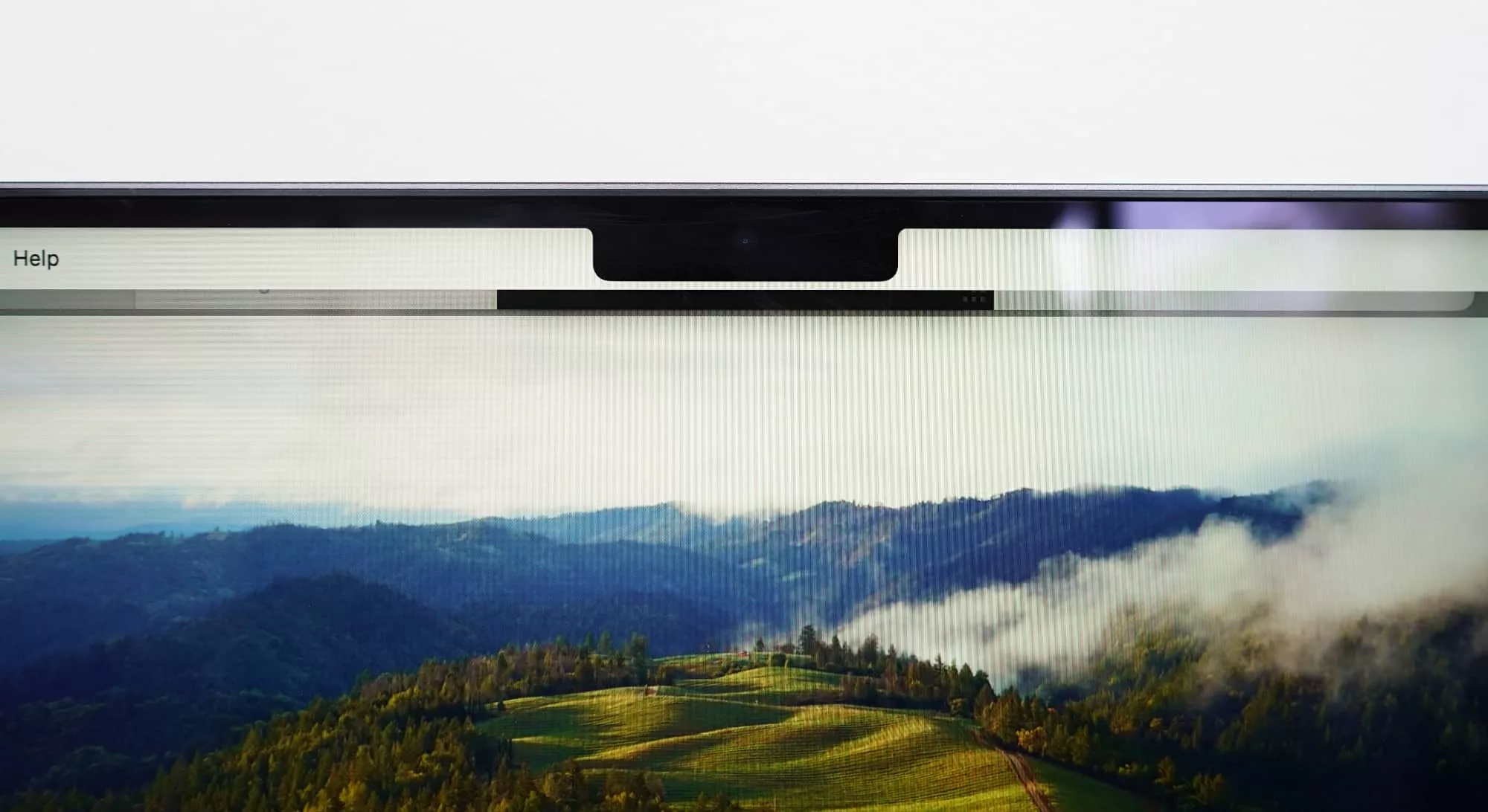
Apple’s use of mini-LEDs is handy here, making images pop and retain crispness, also thanks to the panel’s use of 1 billion colours and the P3 colour gamut, while support for the company’s ProMotion technology means you’ll also find refresh rates as high as 120Hz that can vary based on what the system needs.
If all of this just seems like jargon (and it is), just know that the MacBook Pro display is slick, crisp, and very, very easy on the eyes, able to make what you’re looking at look that much more fluid thanks to the refresh rates.
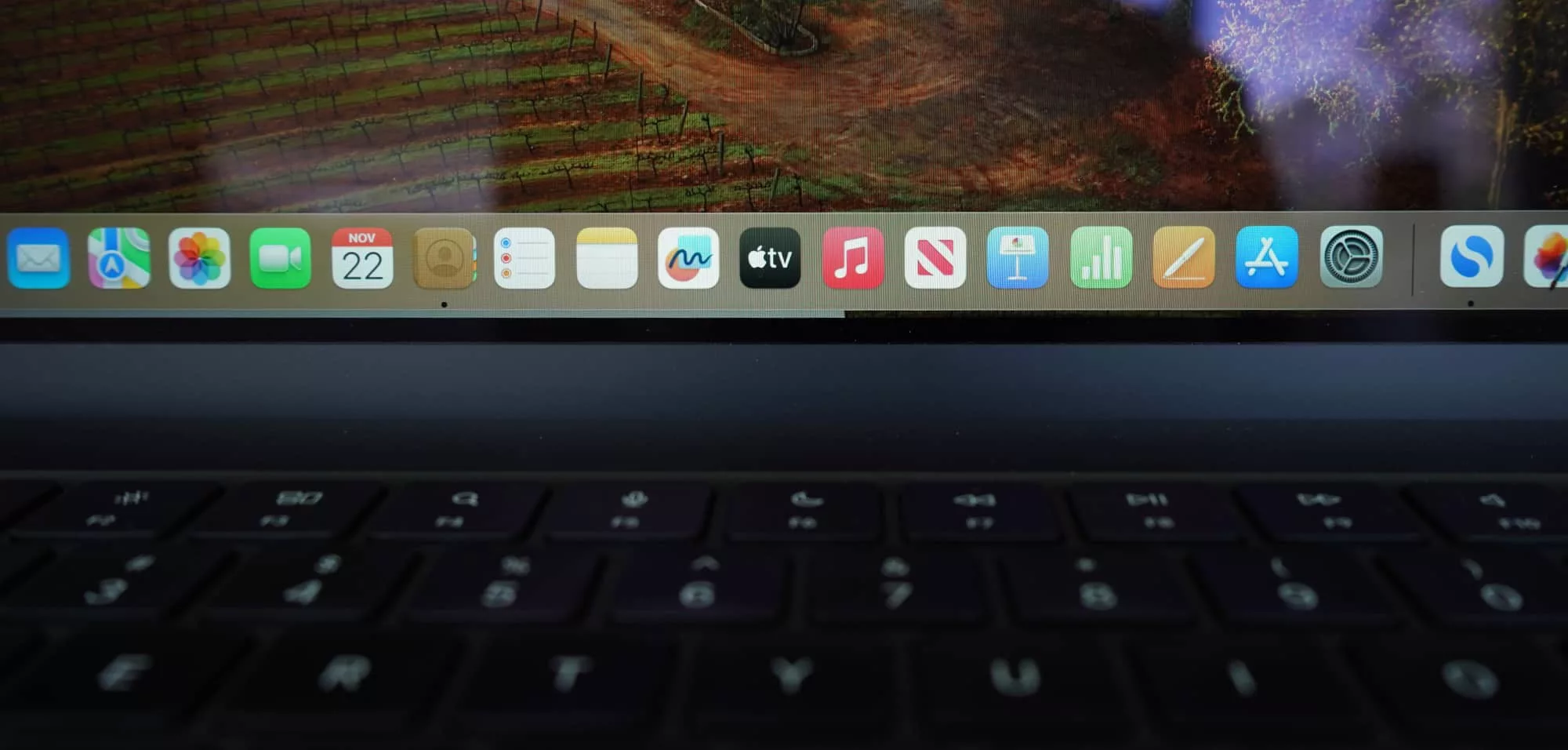
In-use
Using the Mac will be as familiar as it gets, largely because Apple hasn’t changed anything here, either.
A big backlit keyboard and spacious trackpad are all part of for the course, with some of the comfiest typing in all the land.
We’ve said for years that Apple produces one of the best typing experiences, and ever since it moved on from the butterfly keyboard years ago, the keyboards have returned to the legendary status they once were. The typing experience on the MacBook Pro 16 is very much in line with these expectations, and a joy to work on, and there’s even a little fingerprint sensor up top to quickly login and use your wallet securely with.
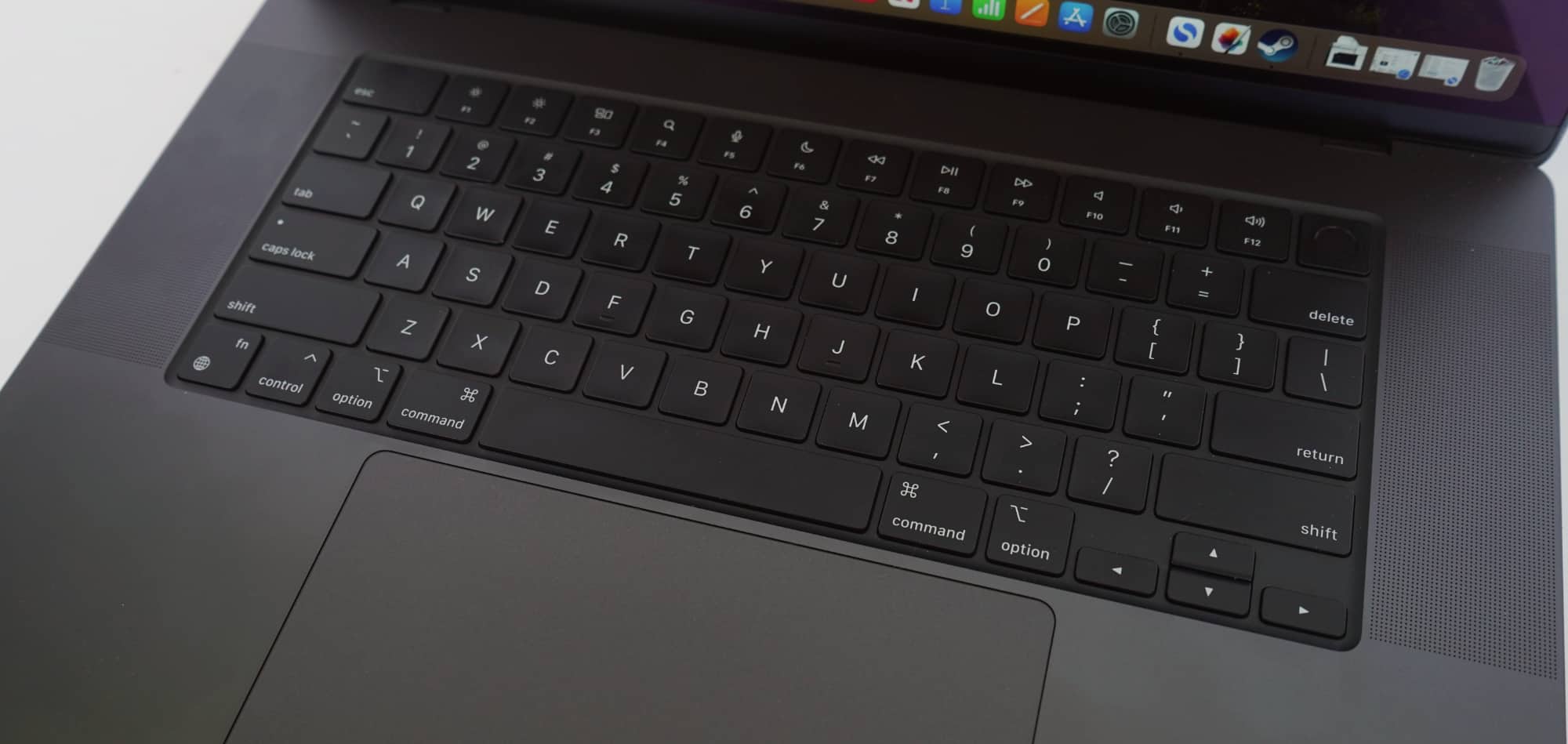
Performance
So nothing about how you use a MacBook has changed in the 2023 MacBook Pro, but everything about its performance has.
Testing the 16 inch MacBook Pro with the M3 Max, we were treated to a staggering level of performance that just about floored the M2 Max MacBook we checked out earlier in the year. It might seem crazy to find that we already have a new chip so early for the pro-lineup, but what’s even more crazy is just how much of an improvement it is.
Take our benchmarks, which show upgrades in CPU, and roughly twice the graphical performance of the 14 inch M2 Max model we reviewed earlier on in 2023.
That’s no joke: a literal increase of two times for graphics. Yikes.
And then compare the performance to 16 inch MacBook Pro models we’ve reviewed over the years, including when the first 16 inch MBP popped up in 2019.
All of this simply shows the latest take is just light years ahead of everything else.
Professional and workstation uses
In real-world use, it means the 16 inch M3 Max MacBook Pro is the bringer of power and an absolute beast of delivery. This is the most impressive slim machine you’ll ever lay eyes on. There is just so much power.
Testing with Xcode compiles for our app meant seeing an iPhone simulator and compiled code with lots of speed, while video exports from Final Cut Pro were also delivered much more quickly, as well.
We never have quite the level of instruments to throw into our Logic Pro projects, and that’s probably more a test of memory limitations (RAM), but exports out from projects are pure CPU, and they push on even faster, as well.
Loading up a big project in Unreal Engine 5, we also found the hardware had no problem dealing with a sizeable project, something not every computer likes.
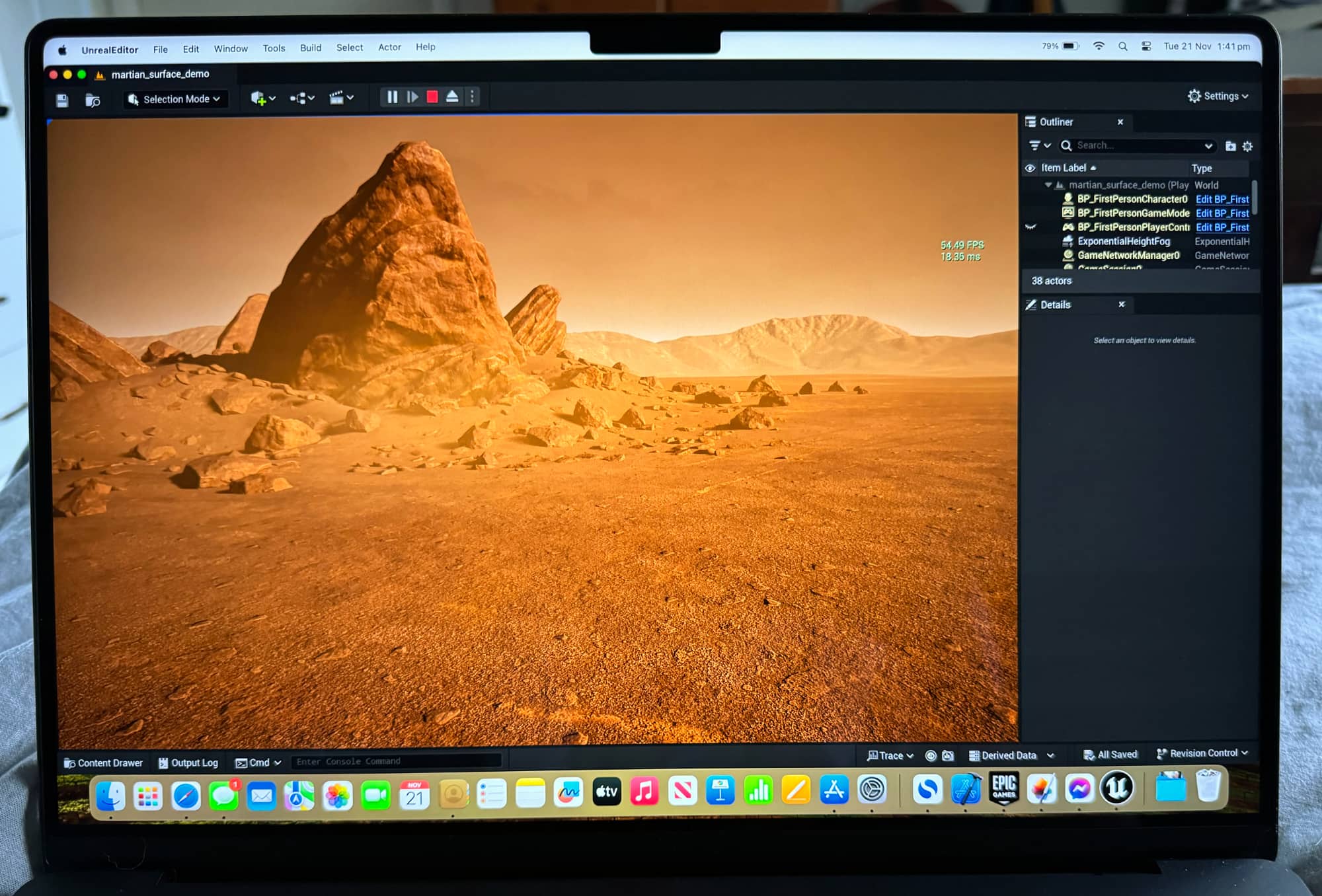
Your mileage may vary, of course, because projects aren’t always the same especially for different needs, but our simulation of the environment of Mars we were building loaded better on the M3 Max MacBook Pro than any other machine we’ve tested prior, and it was about enough to make us fall in love. While one VR file didn’t want to load (and we suspect it might have been our error), all others were fine, and we were able to explore our Mars-scape at 35 to 53fps without any issues whatsoever.
In short, workstation needs are sorted here. Apple has really shown professionals just what its new hardware can do, and the answer is just about anything.
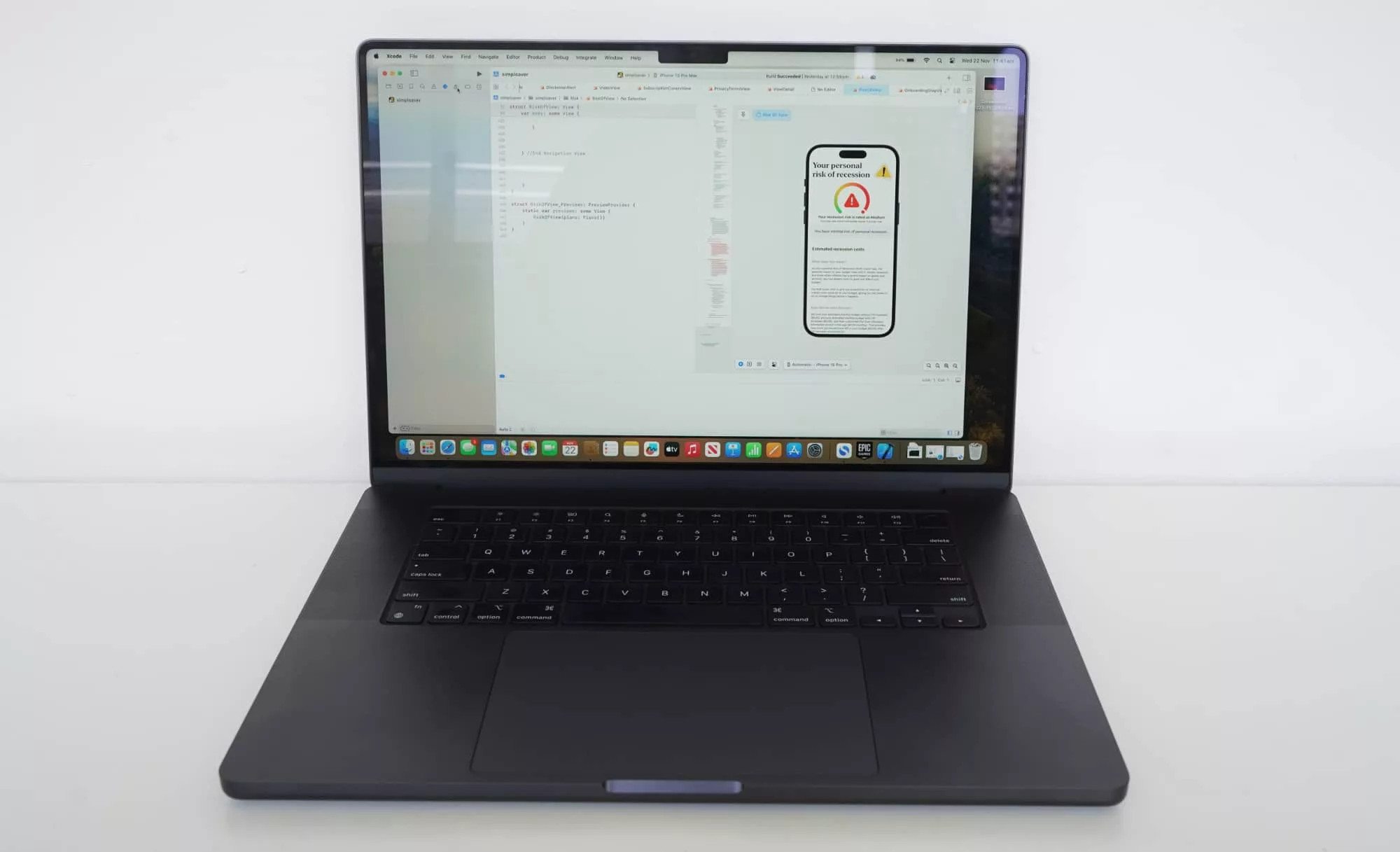
Gaming on an M3 MacBook Pro
Workstation uses are just one thing you might want to play with on this hardware, because all work and no play makes its owner something something.
Apple Arcade games run fine, but they’re supposed to, working with pretty much every piece of Apple hardware from the iPhone to the iPad to the Mac we’re reviewing.
To test a little bit more, we grabbed titles from Epic’s Launcher and Steam, opting to check the frame rates of titles such as No Man’s Sky and Surviving Mars. Both titles played nicely with high resolutions, with No Man’s Sky able to run at the native 3456×2234 resolution in either high or ultra.
Gaming isn’t something we do a lot of lately, and Mac. Games aren’t exactly in high supply, but it’s nice to see high-end performance is on offer if need be.
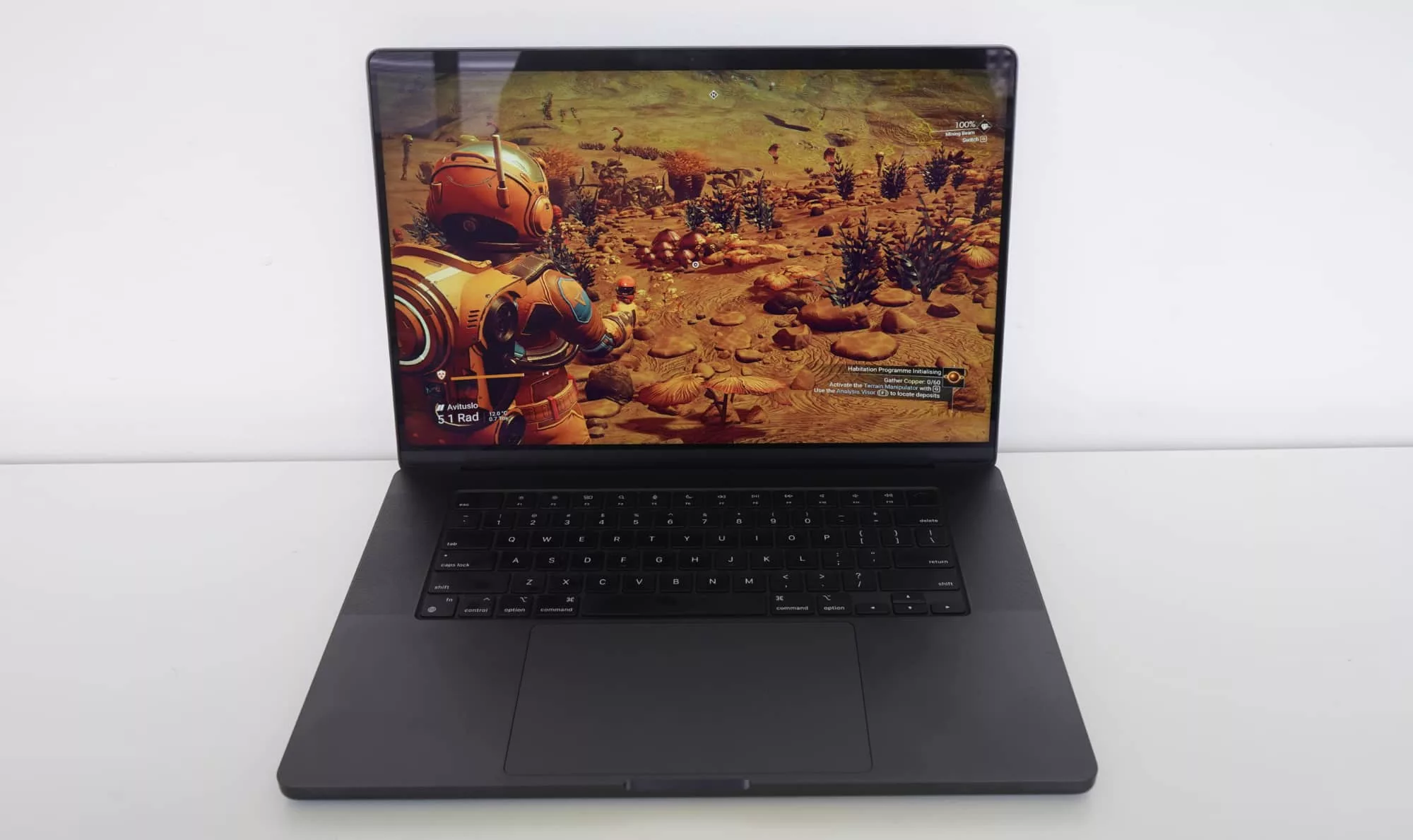
Battery
In fact, it’s pretty clear the 2023 M3 MacBook Pro is made for performance, and it’s just about the best you can do for battery life, as well.
The word we’d use is “plenty”, in that there is plenty of battery so much that you won’t need to actually think about the battery as you use the laptop.
Officially, Apple provides numbers of up to 22 hours watching movies via the Apple TV app and up to 15 hours of wireless web.
In real-world practical usage, you should find a minimum of 10 to 18 for productivity, with the amount you use that processing tech and performance reducing based on needs.
Remarkably, the impressive battery life reveals itself very quickly. Upon setup, we’d been using the new MacBook Pro for an hour, installing Unreal Engine, Steam, and making tweaks to some web code. In all that time, the battery life reduced a grand total of two percent. It’s really impressive.
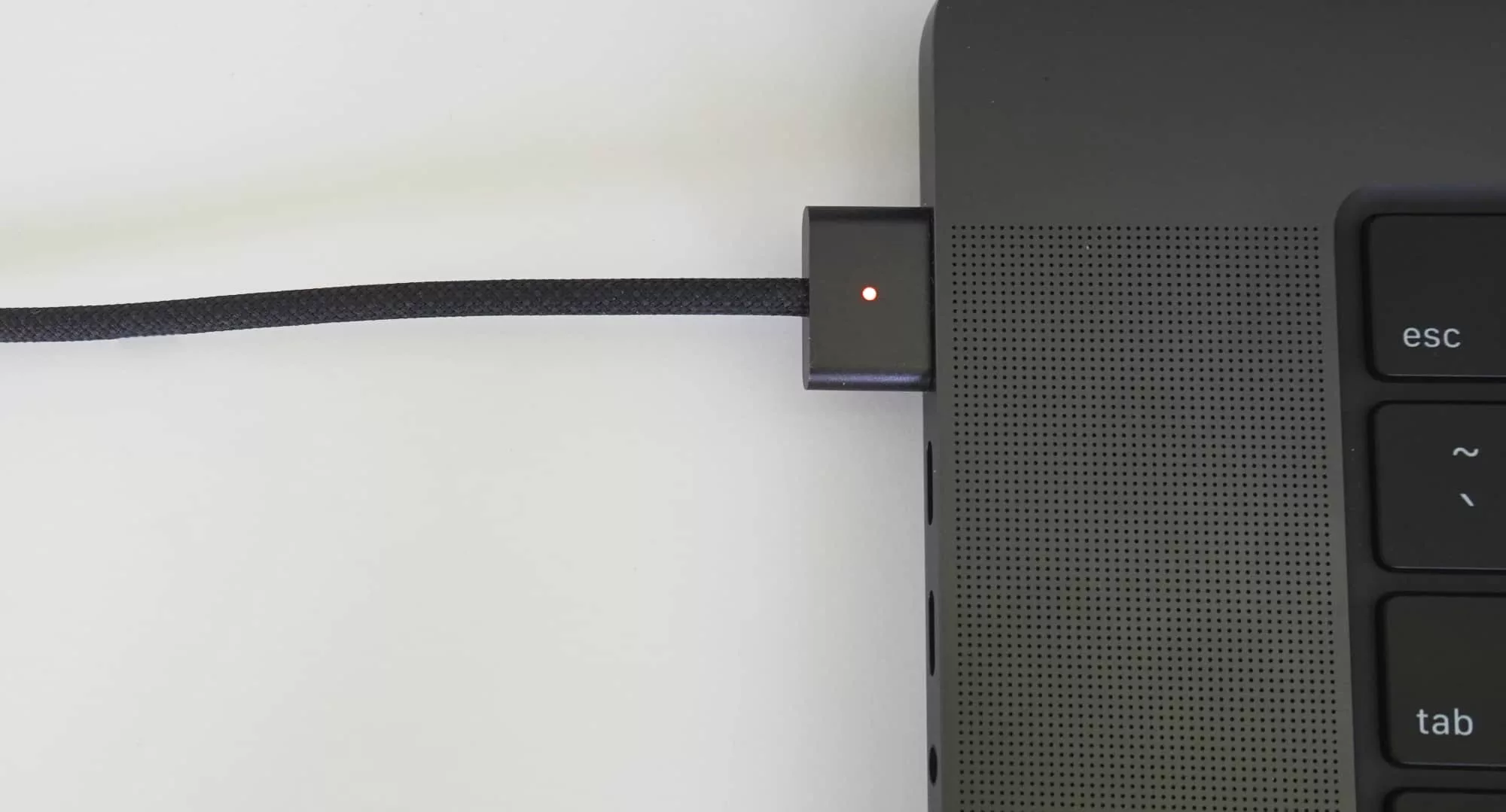
In games, our copy of No Man’s Sky played in the Mac’s native res and with ultra graphics settings chewed through 10 percent of battery for about 25 minutes of play. That’s not too shabby, either.
You’ll also find a 140W GaN charge pack in the box, a big power amount in a relatively backpack-friendly design, though it can also be charged from a 200W charge brick like the one Satechi makes if you happen to have one. For Apple, the MBP can be fast-charged using the 140W USB-C brick, but you can also trickle in a charge using pretty much any other USB-C charger, it just may not be charged at the same rate.
An interesting side note, though: while the Space Black MacBook Pro comes with a black MagSafe charge connector, the charging pack is still white. It’s almost like an Eskimo Joe song, except instead of “Black Fingernails, Red Wine”, it’s “Black MagSafe Cable, White Pack”.

Value
The biggest conundrum with the M3 Max MacBook Pro 16 is the price, which starts at a staggering $5999 in Australia and can be customised to be much higher.
Technically the $5999 16 inch MacBook Pro with M3 Max will get you a 14-core CPU and 30-core GPU with 36GB RAM and 1TB SSD. The model we reviewed was the next tier up, offering a 16-core GPU and 40-core CPU alongside 48GB RAM and 1TB SSD, which costs a good $900 more at $6899. This isn’t a cheap laptop by any stretch of the imagination, and you can tweak the specs if you have the funds.
If money is no object and you need even more performance, you could opt for a 16 inch M3 Max MacBook Pro with 128GB RAM and 8TB SSD for $11,699. Yikes.
You can also get it less expensive with an M3 Pro chip which has 12 CPU cores and 18 GPU cores, priced from $4299, but the 16 inch model only comes with either an M3 Pro or M3 Max, and that means spending at least $4K in Australia.
No matter how you approach it, this Mac is certainly big, but it ain’t cheap.
If you’re hankering for a Big Mac and don’t need the high-end hardware, you may want to opt for the 15 inch M2 MacBook Air, which delivers plenty of performance, just not quite the same level, as seen in the benchmark below.
What needs work?
But if you need the performance, you may not care, because price is more or less its only failing.
You’re getting just about everything you could from a computer in the 2023 MacBook Pro. Granted, the 16 inch model is big, and one of the more sizeable machines around, but Apple has found a way to make this performance perfectly portable, with the 2.16kg heftier than an Air, but delivering so much more.
Just like prior 16 inch MacBook Pro models, the ports are fairly flexible, especially for Apple, and it even has some workstation PC laptops beat.
About the only daunting issue for us is the price, which is very high and may make you rethink your needs.
A minimum of just under $6K in Australia is what you need for the 16 inch M3 MacBook Pro, which may well be too much for some buyers.
It seems this generation really sees Apple citing the difference between pro users with properly pro needs, and everyone else. If you’re not editing sound, video, or churning through data, you may want to consider the 16 inch M3 Pro model, which saves almost $2K and starts at $4299, offering much the same experience and hardware, but just scaling back the processing tech a little. It’ll still be faster, and faster than the basic M3, but you also won’t need to fork out quite as much cost for what is ostensibly the same thing.
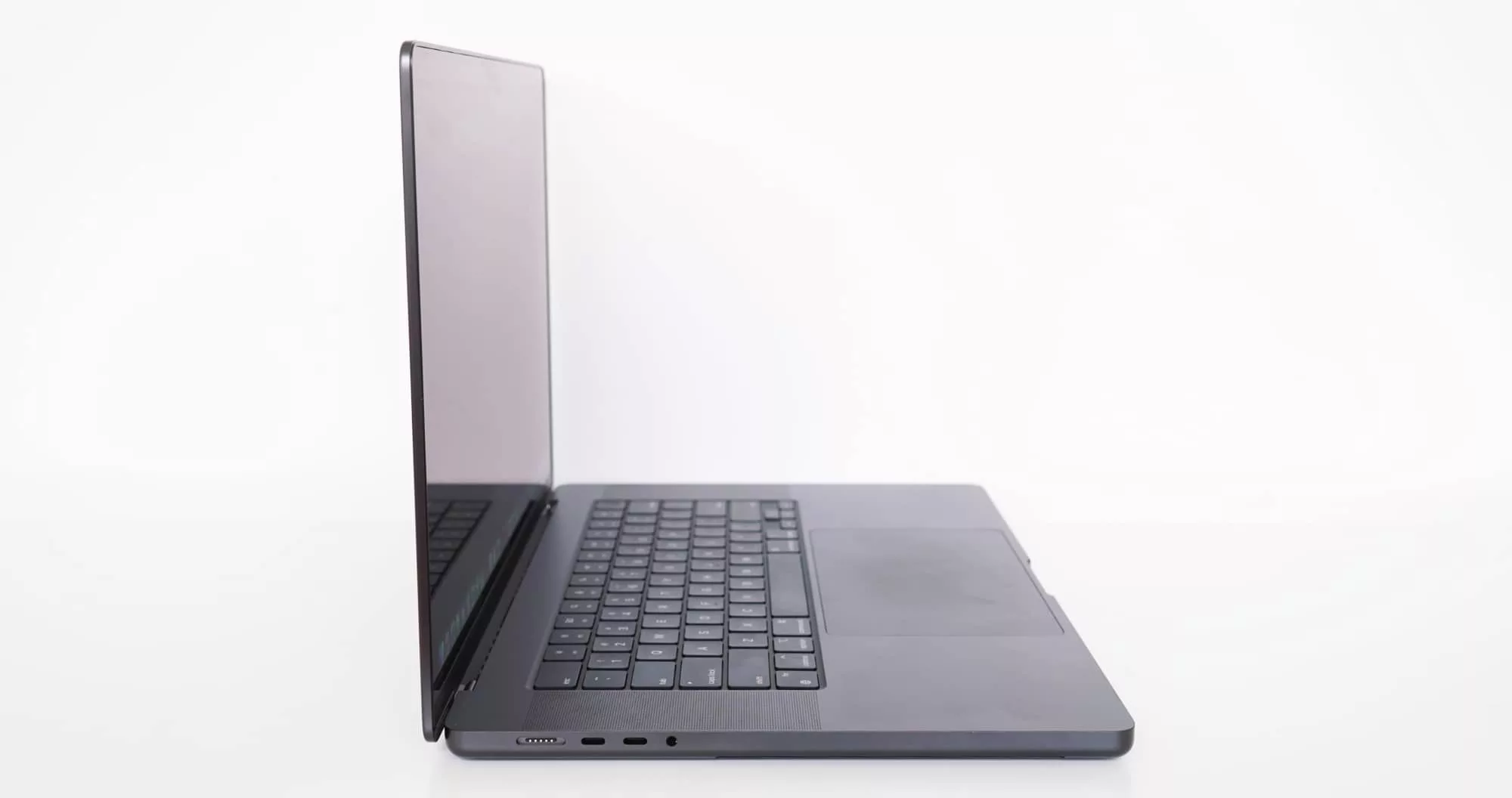
Final thoughts (TLDR)
In these trying times where the cost of living crisis can make us really crunch budget numbers, spending up on a big and expensive laptop might not be on everyone’s list. We’d have the same concerns, too.
Laptops already vary wildly in price and performance, and Apple’s range offers lots of choices already.
As it is, you can pick between an old but still great option in the still available and relatively entry-level 13 inch M1 MacBook Air, the newer and premium 13 inch M2 Air, and the 15 inch M2 MBA variation on that theme. Those are the standard MacBook models most people will check out and deliver enough performance for most, even for folks who need high-end hardware.
But if you know you need high-end hardware already, you know you’re probably looking at something even more top-tier in the end.
That is specifically where the 16 inch M3 Max MacBook Pro is pitched, built for folks who need the most of everything and don’t mind paying for it.
This is the top tier laptop. Nothing comes close. It’s power encapsulated and a joy to use.
It won’t be for everyone, and the price more or less points that out, but if you need raw speed and capability, Apple’s M3 Max MacBook Pro has it in spades. Highly recommended.



